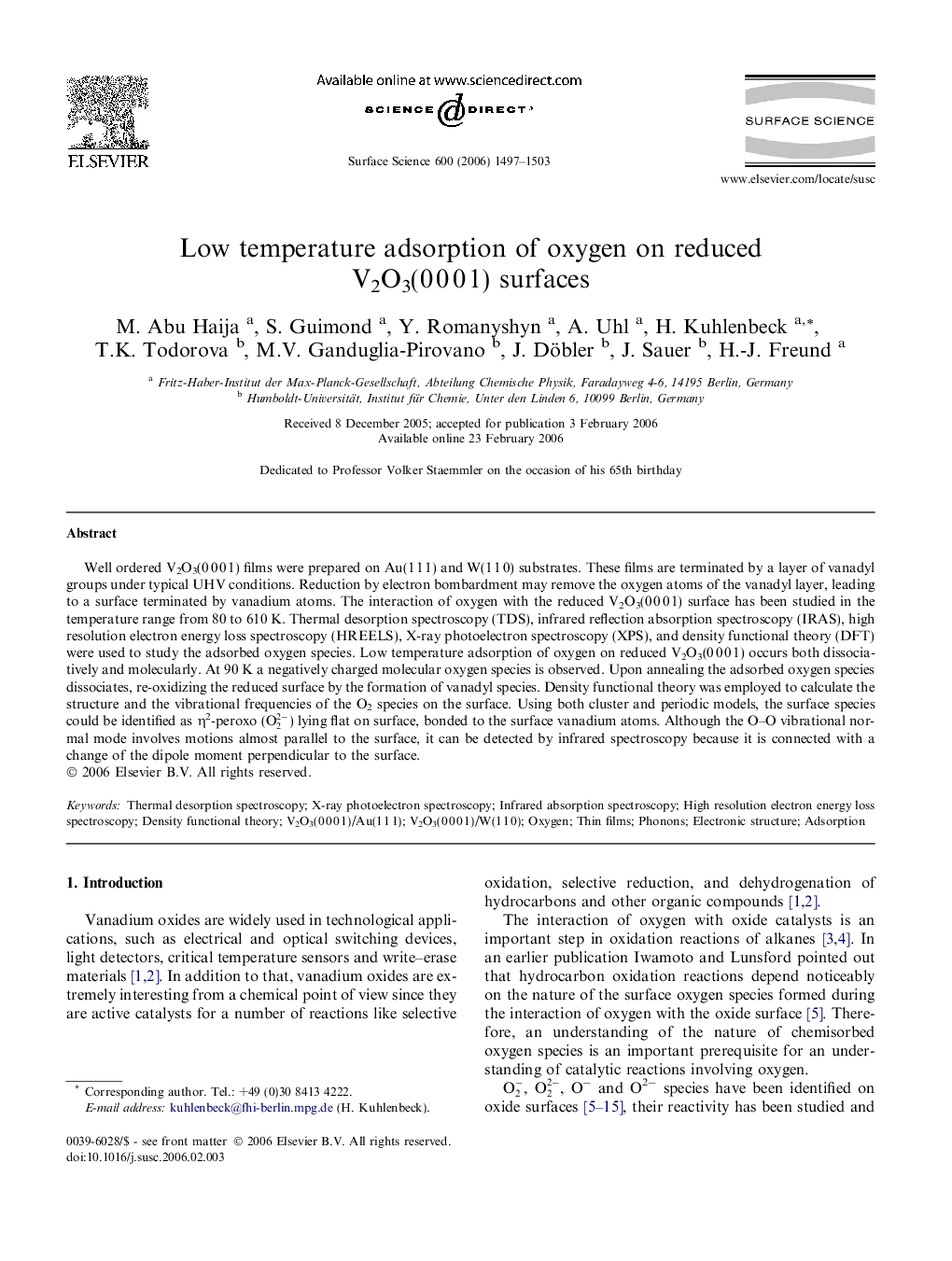| Article ID | Journal | Published Year | Pages | File Type |
|---|---|---|---|---|
| 5426358 | Surface Science | 2006 | 7 Pages |
Well ordered V2O3(0 0 0 1) films were prepared on Au(1 1 1) and W(1 1 0) substrates. These films are terminated by a layer of vanadyl groups under typical UHV conditions. Reduction by electron bombardment may remove the oxygen atoms of the vanadyl layer, leading to a surface terminated by vanadium atoms. The interaction of oxygen with the reduced V2O3(0 0 0 1) surface has been studied in the temperature range from 80 to 610 K. Thermal desorption spectroscopy (TDS), infrared reflection absorption spectroscopy (IRAS), high resolution electron energy loss spectroscopy (HREELS), X-ray photoelectron spectroscopy (XPS), and density functional theory (DFT) were used to study the adsorbed oxygen species. Low temperature adsorption of oxygen on reduced V2O3(0 0 0 1) occurs both dissociatively and molecularly. At 90 K a negatively charged molecular oxygen species is observed. Upon annealing the adsorbed oxygen species dissociates, re-oxidizing the reduced surface by the formation of vanadyl species. Density functional theory was employed to calculate the structure and the vibrational frequencies of the O2 species on the surface. Using both cluster and periodic models, the surface species could be identified as η2-peroxo (O22-) lying flat on surface, bonded to the surface vanadium atoms. Although the O-O vibrational normal mode involves motions almost parallel to the surface, it can be detected by infrared spectroscopy because it is connected with a change of the dipole moment perpendicular to the surface.
